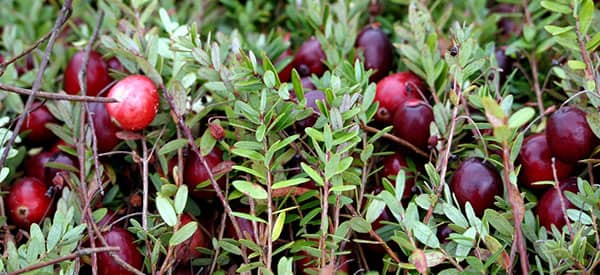
Cranberry
Cranberry (Vaccinium macrocarpon) is a dwarf shrub that grows pink blossoms resembling the head of a wading bird, the crane. Its flowers pop into small, round berries, which complete the traditional Thanksgiving and Christmas turkey dish presentation. The fruit of the cranberry is processed into juices, jams, and sauces. Roughly, only 5% of the product that reaches the market are sold as fresh berries. Aside from being a holiday staple, cranberry is also a superfood, yielding a plethora of health benefits.
Cranberries were cultivated for thousands of centuries. It was first discovered in the swamps in the northeastern part of North America. It was used by the Wampanoag people. They call it sasumuneash, which translates to wild berries. During the 16th to 17th centuries, cranberries were already cultivated in Europe, particularly in England and Netherlands. The cranberry industry started as early as the 1800s when the plant was commercially processed for home use.
Where Cranberry Is Found
Cranberries thrive in bogs, fens, marshes, and places with wet conditions and cold temperatures. Though the shrub is native to North America, they are mainly grown in five states only. Wisconsin is the largest producer constituting about half of the country’s cranberry harvests. Massachusetts, New Jersey, Washington, and Oregon also grow cranberries for export to warm-weather states.
⇒ The Complete Map of Edible Plants: Find Out What You Have in Your Area! (Video)
How To Identify Cranberry
Cranberries are small, round, and shiny berries. But, they often reach the market in their juiced, canned, frozen, or dried forms. These berries grow from trailing vines and short shrubs, making them an excellent ground cover for bogs. The plant also adds ornamental value to ponds and butterfly gardens.
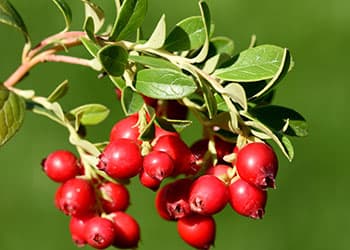 Leaves. Cranberry is a broadleaf evergreen with leathery leaves. The leaves are simple, alternate, hairless, and toothless. They are small with a blade length that measures only about 5 to 17 mm. The shape is oblong to the ellipse with a rounded base and pointed tips. The upper surface of the leaves is dark green, smooth, and leathery, while the underside is pale green to white.
Leaves. Cranberry is a broadleaf evergreen with leathery leaves. The leaves are simple, alternate, hairless, and toothless. They are small with a blade length that measures only about 5 to 17 mm. The shape is oblong to the ellipse with a rounded base and pointed tips. The upper surface of the leaves is dark green, smooth, and leathery, while the underside is pale green to white.
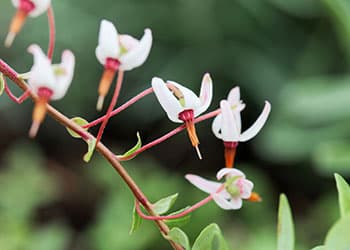 Flowers. The cranberry flowers are showy and bloom in spring from May to July. They can be white, pink, or fuchsia, with flower stalks developing from the stem. The flowers are small, narrowly lanced with 4 to 5 petals or rays. The petals are fused to the center with a tight cluster of pink or reddish stamens.
Flowers. The cranberry flowers are showy and bloom in spring from May to July. They can be white, pink, or fuchsia, with flower stalks developing from the stem. The flowers are small, narrowly lanced with 4 to 5 petals or rays. The petals are fused to the center with a tight cluster of pink or reddish stamens.
Fruits and Seeds. After the flowers mature, the rounded cranberry fruits follow. They start as green berries and mature into shiny, dark red. The fruits are fleshy with four centrally placed tiny dark red seeds in capsules.
Roots. Cranberries have a shallow and fibrous root system that grows only 15 cm deep.
Stem. The cranberry shrub is low-growing and vine-like. It is slender and wiry; woody but not too thick, with roots growing at the nodes. The new branches often grow erect and ascending, and are covered with brown bark. Adult cranberry plants have thin and smooth bark. It can grow from 5 to 20 cm tall and spread to about 7 meters wide.
Vaccinium macrocarpon, also called American cranberry or large cranberry, is grown commercially for its apple-like taste. It is a member of the Ericaceae or heath family and subgenus Oxycoccus and was originally called crane-berry. It has varieties and cultivars known as:
- Pilgrim, grows large fruit and late to ripen
- Early Black, a vigorous grower that ripens early
- Thunderlake, taller and less spreading
How To Grow Cranberry
Despite the fact that cranberries contain seeds, they are not necessarily grown from them. They do grow from seeds, but it may take longer for the cranberry to germinate. Cranberry seeds bought from stores for planting purposes may be readily available. They are more viable than seeds that are harvested directly from fresh fruit.
The most practical way of growing cranberries is buying and nurturing potted-up seedlings from nurseries. Propagating cranberry cuttings is also an ideal way of starting the plant.
Cranberries enjoy moist to wet environments since they were first propagated in impounding bogs. Water is everything for cranberries, such that irrigation and sprinkler systems are ideal to have. If your only source of water is tap water from the public utility company, you are not independent. Also, you’re paying for it. Here’s how you get your own independent source of water.
Propagating Cranberries from Seeds
You can purchase cranberry seeds for planting in online stores. Unless the pack is labeled “pre-stratified,” you will need to allow the seeds to undergo cold stratification. You can do this by putting the seeds in a refrigerator for three weeks before sowing.
Sow the stratified seeds in a 3 to 4-inch pot with an acidic potting mix. Put only two cranberry seeds in each pot, about ¼ inch deep, and cover it lightly. Gently tamp down the soil and spray it with water to moisten it.
Put the pot in a place with a consistent temperature and warmth of 70⁰F for the seeds to germinate successfully. Ideally, you can use a heat mat or propagator for them. Keep the growing medium moist and do not allow it to dry out. Germination may take around 3 to 5 weeks or longer.
Keep the seedlings in the pot and thin out the smallest one. Place the pot in a warm place with a 65 to 70⁰F temperature and keep it moist. You may transplant the seedling after a year, either in spring or fall.
Propagating Cranberry from Stem Cuttings
Stem cuttings are more reliable and easier to root than growing cranberries from seeds. So if you have the parent plant, transplanting its stem is better than harvesting the seeds for the purpose.
The ideal season for transplanting cranberries is in spring or early summer. Take about five inches of the stem and remove all of the leaves except for the top five leaves. Dip the cut end in a rooting hormone to expedite its growth.
Place the cutting in a small pot with acidic and well-draining potting mix. You may use a regular potting mix and amend it with peat moss and ericaceous compost. Stick the stem about three to four inches deep and tamp the soil around.
Place the pot in a warm area with indirect sunlight. Water the plant regularly and do not let it dry out. Transplant the new plant after six to eight weeks when new roots have been established. You can either transplant it into the garden or a large pot.
⇒ 10 Plants That You Should Never Plant Together (Video)
Plant Care and Maintenance
Aside from moisture, cranberries also need acidic soil that drains well. Cranberries may only bear fruits after four years of thorough care. Its basic requirements are: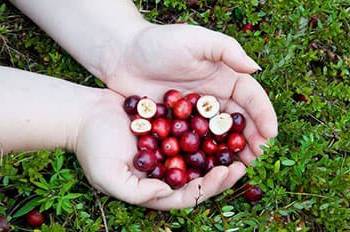
- Wet, acidic, highly organic soil
- Sunny spot
- Adequate freshwater supply
- Soil pH levels between 4.5 to 5
- Regular weeding and grass removal
- An inch of water weekly
- Rain or filtered water instead of the tap
- Organic mulch in winter
How To Harvest Cranberry
Cranberries are ready for harvest when they display an even and deep-red color, and are slightly firm to touch. You may do the bounce test by dropping fruit on the floor. If it bounces back, the fruits are ready for harvesting; otherwise, you need to wait for a few more days.
When harvesting cranberries, simply pick the fruits right off the plant and discard the damaged ones.
Commercial cranberries are interestingly harvested using either the dry or wet method.
Dry harvesting is done only when the vine is completely dry. It means that the previous day’s rain shower will postpone the next day’s harvest. Pickers use mechanical self-propelled harvesters that comb through the bog and drop them into a burlap bag. Cranberries are dry harvested if the fruits are to be sold fresh for cooking or baking.
Wet harvested cranberries are made into juices, sauces, and ingredients in some processed foods. It is done by flooding the bog for the berries to float. Water reels stir up the water so that the berries will fall off from the twigs and float.
Cranberries are preserved by washing and freezing them right after harvest. Place them in an airtight container, and they will last for 10 to 12 more months.
What Cranberry Is Good For And Natural Remedies Made From It
Cranberry’s most notable health benefit is curing urinary tract infections (UTIs). Drinking cranberry juice increases the excretion of oxalic and uric acid in the urinary tract. Its high level of antioxidants stops the bacteria from adhering to the bladder and urinary tract walls. Thus, it reduces infection and prevents the bouts of recurring UTIs.
It is a low-calorie and high fiber fruit that maintains the overall health of the digestive tract. It outranks other vegetables in its vitamin C content. Its antioxidant content gives the cranberry the advantage of being recognized as a superfood.
Cranberry removes free radicals from the body and detoxifies it to slow down aging. It benefits the skin by maintaining its supple glow and preventing acne and other skin problems. Cranberry also protects the body from some types of cancer by reducing tumor growth with its chemoprotective property.
The anti-inflammatory property of cranberry benefits the condition of people with rheumatoid arthritis and many types of inflammation. It prevents the development of osteoporosis and supplies the body with Vitamin K to boost bone density and resiliency.
A normal dietary intake of cranberry can reduce heart disease risks and high blood pressure. Its flavonoids and phenols reduce the risk of heart attack, stroke, and atherosclerosis.
When taken properly, cranberry delimits diseases and improves the body’s health. It treats many conditions not limited to the following: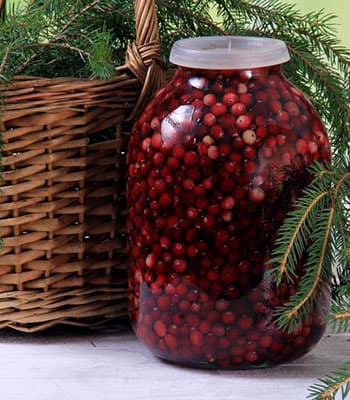
- Urinary tract infections, hematuria, urethritis
- Leucorrhea
- Mouth and gum diseases
- Heart diseases
- High blood pressure
- Digestive problems
- Joint problems, fracture
- Cold, cough, and flu
- Candidiasis
- Obesity
- Cancer
- Hair and skin problems
What Parts Of The Plant Are Used For Remedies
Cranberry is used raw, juiced, dried, or in infusion and capsule. Its most essential part is the fruit, although its leaves are also used in traditional medicine.
Cranberry juice is the most popular natural form of fruit used for treating urinary infections. Raw fruits are commonly used in tarts, jams, preserves, and sauces. It is mostly combined with other fruits because it has a slightly acidic taste when used alone.
Dried cranberry fruit is found in trail mixes or added to oatmeal and whole-grain cereal. They are also added to baked goods like cakes and muffins. The dried fruits are brewed and taken as an infusion for relieving UTIs as well.
⇒ The Plant That Reduces Night-Time Bathroom Trips (Video)
Cranberry supplements in the capsule are derivatives of cranberry juice but without additives and preservatives. So saying, taking a cranberry capsule equals an 8-ounce glass intake of cranberry juice.
Easy Cranberry Sauce
Ingredients
- 1 cup sugar
- 1 cup water or orange juice if desired (I used ½ cup water and ½ cup orange juice)
- 4 cups fresh or frozen cranberries
- Optional mix-ins: cinnamon, nutmeg, orange zest, allspice, pecans, or spice and nuts of choice
Steps
- Wash and rinse cranberries. Remove damaged ones.

- In a saucepan, bring sugar and water to a boil until the sugar dissolves.

- Lower the heat and add the rinsed cranberries, simmering them until they burst.
 Add the mix-in spice or nuts according to the preferred amount, if any.
Add the mix-in spice or nuts according to the preferred amount, if any.- Remove from the pot and allow the cranberry sauce to cool. Transfer it into a bowl and chill in the refrigerator where it will keep for 10 to 14 days.

How to use
Cranberry sauce has many uses. You can use it on toast, mix it with plain yogurt, or put it on meats and poultry. You can also add it on whip cream or on your pancakes and waffles, or make fruit leather to add vitamins to your stockpile… the ideas are endless!
What Plants Resemble Cranberry
| Features | Cranberry (Vaccinium macrocarpon) | Lingonberry (Vaccinium vitis-idaea) | Teaberry (Gaultheria procumbens) |
|---|---|---|---|
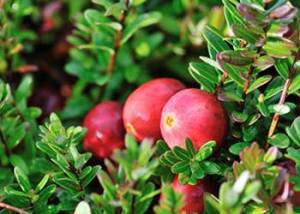 | 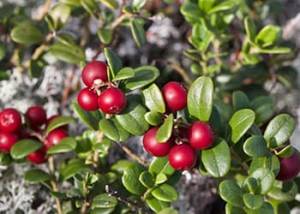 | 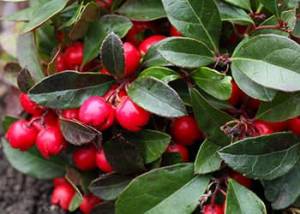 | |
| Size | 20 cm tall | 5 to 15 cm | 10 to 20 cm |
| Leaves | Green; glossy; simple; alternate; ovate | Green; glossy; oval; alternate | Evergreen; ovate; broad |
| Flowers | Showy; pink/white; 4-5 petals | Showy; white/pink; 4-5 petals | White with pink tint; bell-shaped; 5 curled lobes and 5 ovate lobes |
| Fruits/Seeds | Red; round berries; dark red seeds | Red; round; yellow seeds | Red; small; round |
| Stem | Low-growing; creeping; wiry; brown | Low; creeping; slender | Slender; creeping; semi-woody |
| Scent | Tart and fruity | Fruity | Wintergreen scent |
Warnings And Cautions
Cranberry has few known side effects, such us an upset stomach. It may trigger aspirin allergy and diabetes, and may increase the risk of kidney stones. Cranberry is likely safe when taken in food amounts. If pregnant or breastfeeding, stick to the food amount to be safe.
Powdered cranberry dosing is safe between 250 to 1500 mg for six months. Cranberry juice’s daily intake should be between 120 to 750 ml for 90 days. Meanwhile, cranberry extract is safe when consumed at 120 to 1600 mg for 12 weeks.
Cranberry supplements have moderate drug interaction. It should be taken with caution in combination with other drugs like warfarin, nifedipine, atorvastatin, diclofenac, and liver medicines.
You may also like:
What Happens if You Drink Cranberry Juice Every Day?
How to Recognize an UTI and What to Do Next (Video)
10 Berries You Should Look For In The Woods








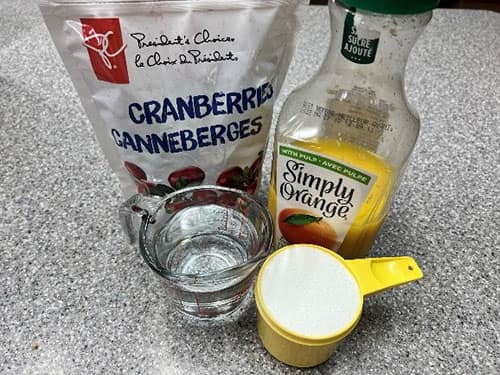


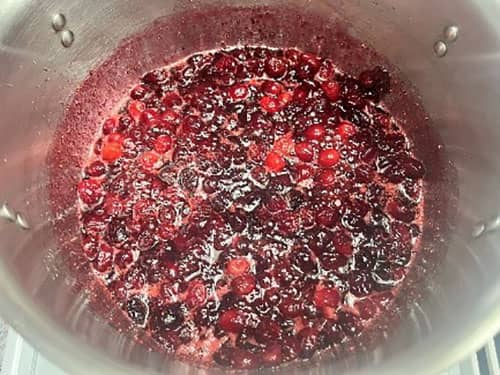 Add the mix-in spice or nuts according to the preferred amount, if any.
Add the mix-in spice or nuts according to the preferred amount, if any.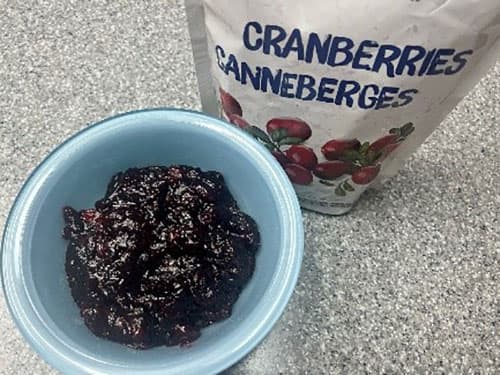
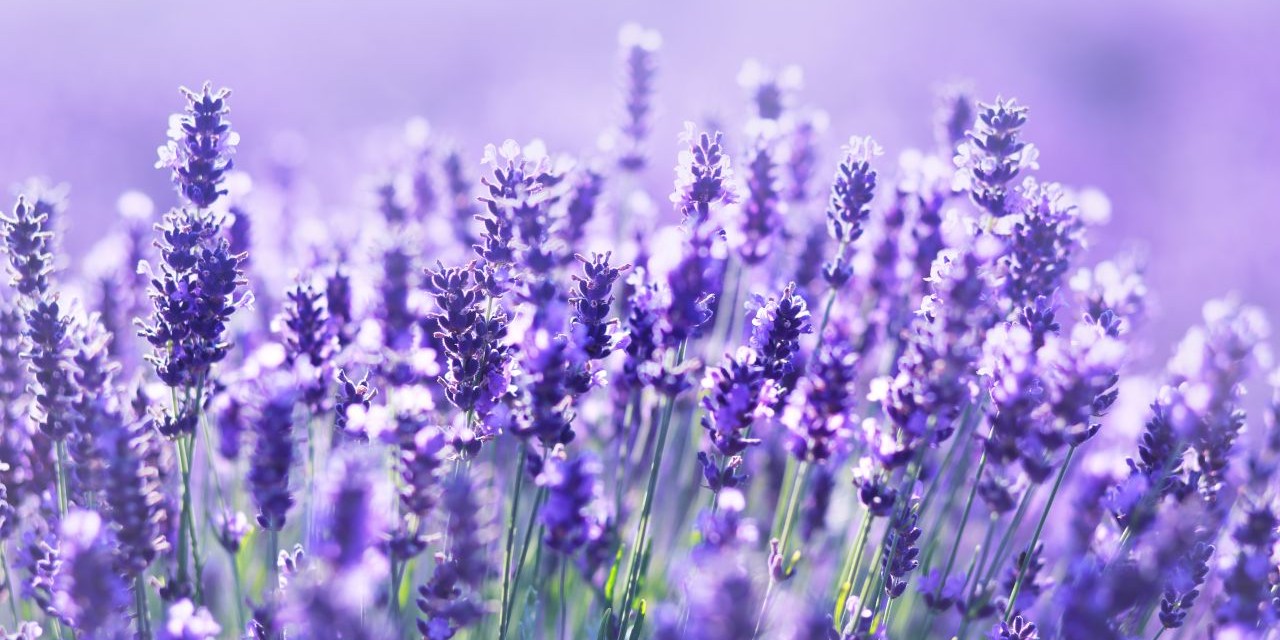
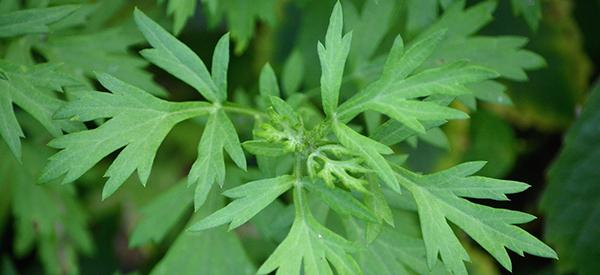
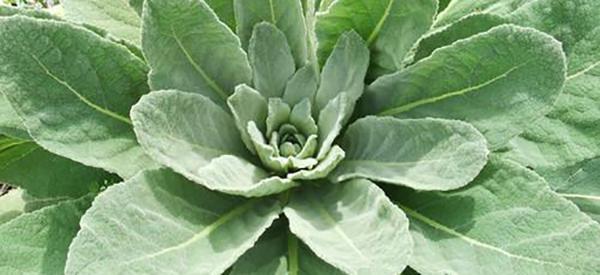
I love this site. It is a history lesson of the old ways. And I bought one of your books several years ago and it is in my bug out goodies, just in case. Over the last few years your information has helped me grow all my own herbs for cooking and remedies for illnesses. Keep up the good work.
Hello Rick,
Thank you so much for your kind words! It’s heartwarming to hear that our work is helping people learn more about herbs and natural medicine!
Many blessings and good health!
Thank you for this information. Great lesson to share, especially with children.
Hello Katie,
Thank you for your comment! We’re glad to hear you enjoy the article.
Many blessings and good health!
I usually cook these, add raisins, apple chunks, cinnamon/ginger/nutmeg/clove and a little sugar (brown & white) to add a little sweetness to the tart flavor…..it then add it to my yogurt or cottage cheese.
That sounds delicious.
Hello Tommy,
Thank you for sharing your recipe with us! We really appreciate it.
Many blessings and good health!
Help please. I need the actual recipe for uti tincture/drink I watched video but never got recipe or what to actually do/take utis.
My favorite fresh cranberry recipe is…..1 bag fresh cranberries,washed and sorted, 1 well washed fresh orange peel and all cut into slices, sugar to taste. Pour cranberries into blender, add. a little water if needed ,puree, add orange slices, add sugar to taste.. Delicious, use wherever you would any cranberries.
I use the WHOLE orange!
You mentioned a warning about using cranberries while taking atorvastatin. How should cranberries be used then? I usually drink 1/4 raw cranberry juice in the morning with 1 Tbsp or ground flax seeds. I take atorvastatin at night. Do you think there is a conflict?
Thank you for the information on cranberries, I need help with reoccurring bladder infections, I believe that eating sweets brings it on, especially at Christmas. Any other ideas of what I can make or take to stop UTI’s. I want to stop it forever. Thank you
Jeannie
beste Jeannie, ik lees je oproep nu pas. Misschien kun je in plaats van veenbessen guldenroede proberen tegen blaasontsteking. bij mij heeft dat enorm geholpen. Liefs Menkafina